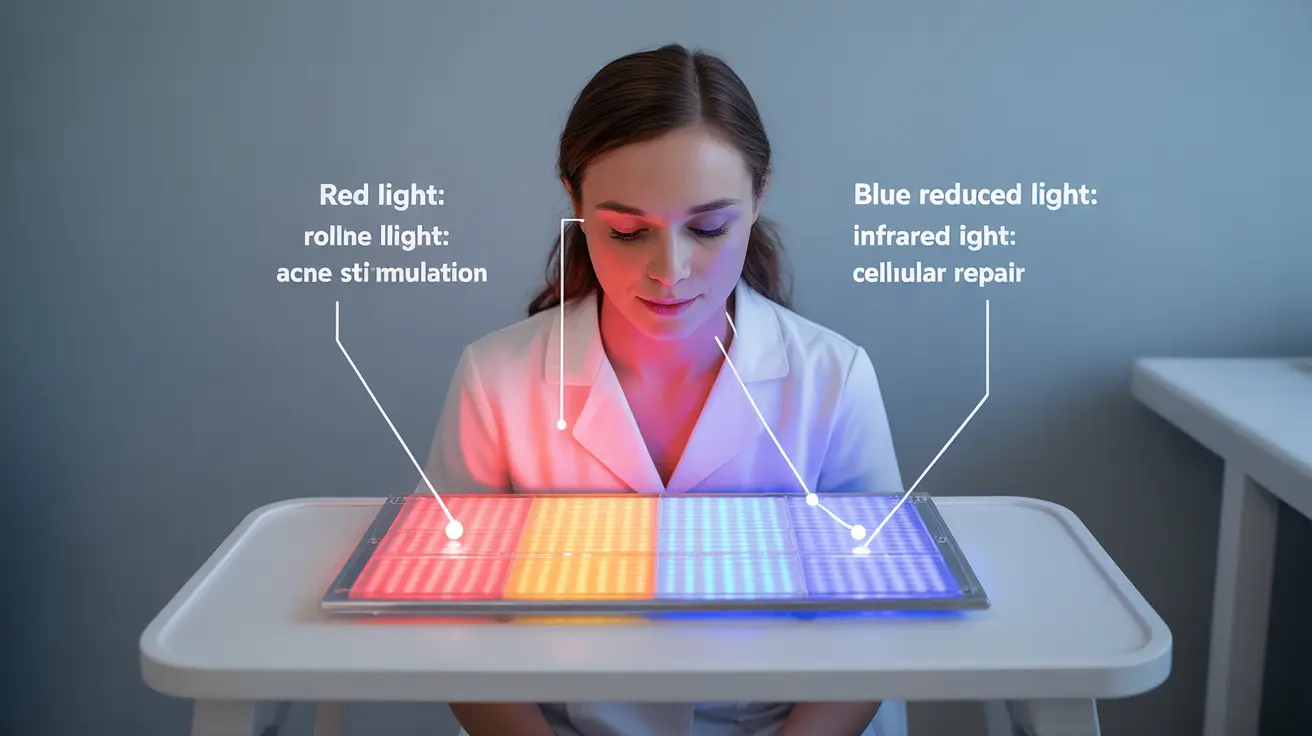LED light therapy has emerged as a groundbreaking skincare treatment that uses specific wavelengths of light to address various skin concerns. This non-invasive technology, originally developed by NASA for plant growth experiments in space, has found its way into both professional dermatology clinics and home skincare routines, offering promising results for numerous skin conditions.
Understanding how LED light therapy works and its potential benefits can help you decide if this innovative treatment is right for your skincare needs. Let's explore the science behind LED light therapy, its various applications, and what you can expect from treatments.
How LED Light Therapy Works
LED (Light Emitting Diode) light therapy operates by delivering specific wavelengths of light energy that penetrate the skin at various depths. Each color of light targets different skin concerns by stimulating cellular responses within the skin:
- Red light (630-700 nanometers)
- Blue light (405-420 nanometers)
- Near-infrared light (850-900 nanometers)
When these light wavelengths reach their target depth, they trigger photobiomodulation, a process that stimulates cellular repair and regeneration. This mechanism makes LED therapy effective for various skin conditions while maintaining a strong safety profile.
Types of LED Light Treatment
Red Light Therapy
Red LED light penetrates deeply into the skin, targeting fibroblasts that produce collagen and elastin. This wavelength is particularly effective for:
- Reducing fine lines and wrinkles
- Improving skin firmness
- Enhancing overall skin texture
- Minimizing inflammation
- Promoting healing
Blue Light Therapy
Blue LED light works primarily on the skin's surface layer, making it ideal for:
- Treating acne-causing bacteria
- Regulating oil production
- Preventing breakouts
- Improving skin clarity
Infrared Light Therapy
Near-infrared light penetrates deeper than both red and blue light, offering benefits such as:
- Enhanced cellular repair
- Improved circulation
- Reduced inflammation
- Accelerated wound healing
- Deep tissue regeneration
Treatment Protocol and Results
Professional LED light therapy sessions typically last between 15-30 minutes. Most practitioners recommend a series of treatments for optimal results, usually 6-8 sessions spaced one to two weeks apart. Maintenance sessions may be recommended every few months to maintain results.
The number of treatments needed varies based on your specific skin concerns and treatment goals. Some people notice improvements after their first session, while others may require several treatments before seeing significant results.
Frequently Asked Questions
What skin conditions can LED light therapy effectively treat?
LED light therapy can effectively treat various skin conditions including acne, signs of aging, sun damage, hyperpigmentation, and inflammation. Red light helps with anti-aging and healing, while blue light targets acne-causing bacteria. Near-infrared light assists with deeper tissue healing and inflammation reduction.
How safe is LED light therapy and are there any possible side effects?
LED light therapy is generally considered very safe with minimal side effects. Unlike UV light, LED therapy doesn't cause burns or skin damage. Some people might experience mild redness or temporary eye sensitivity, which is why protective eyewear is used during treatments. Those with certain photosensitive conditions should consult their healthcare provider before starting treatment.
What is the difference between red, blue, and infrared LED light therapy?
Each wavelength serves different purposes: red light stimulates collagen production and reduces inflammation, blue light kills acne-causing bacteria and regulates oil production, and infrared light penetrates deepest to promote healing and cellular repair at the tissue level. Many treatments combine multiple wavelengths for comprehensive results.
How long does an LED light therapy treatment take and how often should it be done?
Individual treatments typically last 15-30 minutes. For optimal results, most practitioners recommend 6-8 sessions spaced 1-2 weeks apart initially, followed by maintenance sessions every few months. The exact protocol depends on your specific skin concerns and treatment goals.
Can I use at-home LED light therapy devices safely and will they work as well as professional treatments?
At-home LED devices are generally safe when used according to manufacturer instructions. While these devices can be effective, they typically have lower power outputs than professional equipment, meaning results may take longer to achieve. Professional treatments often provide more comprehensive coverage and stronger light intensity, potentially leading to faster results.




